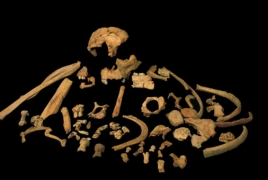
Archaic human species homo antecessor, who lived between 2.5 million and 770,000 years ago during the Early Stone Age, is a close relative to modern humans and Neanderthals, as previously suspected, according to a new paper, published in Nature magazine.
The research was led by Frido Welker and Enrico Cappellini from the University of Copenhagen.
For the study, researchers completed a protein analysis by scanning the dental enamel from an H. antecessor specimen found in Spain back in 1994 and dated to between 949,000 and 772,000 years old, Gizmodo says.
This protein analysis provided an indirect way of studying DNA, which couldn’t be recovered due to the specimen’s extreme age. The researchers found that certain facial features seen in H. antecessor were retained in early modern humans, as well as Neanderthals and Denisovans. This would imply an important role for H. antecessor in the ultimate evolution of these later hominins.
The new study “provides evidence that the Homo antecessor species may be closely related to the last common ancestor of Homo sapiens, Neanderthals, and Denisovans,” said José María Bermúdez de Castro, a co-author of the study and a researcher at University College London, in a press release.
Facial features shared by these hominins “clearly appeared much earlier than previously thought,” he said, which means H. antecessor could be a kind of “basal” species to the “emerging humanity formed by Neanderthals, Denisovans, and modern humans.”

